

+
Optily has partnered with Clearco to provide you with financial tools to grow your business.
Start your funding application below. Approval can take as little as 24 hours and every funded account receives 3 months of Optily software for FREE.
Since Spring 2021, marketers have been dealing with the aftershocks of iOS 14.5. Although marketing has gotten more challenging, there are plenty of ways you can still ensure success with online marketing despite the data loss and rising acquisition costs.
In this guide, we’ll cover:
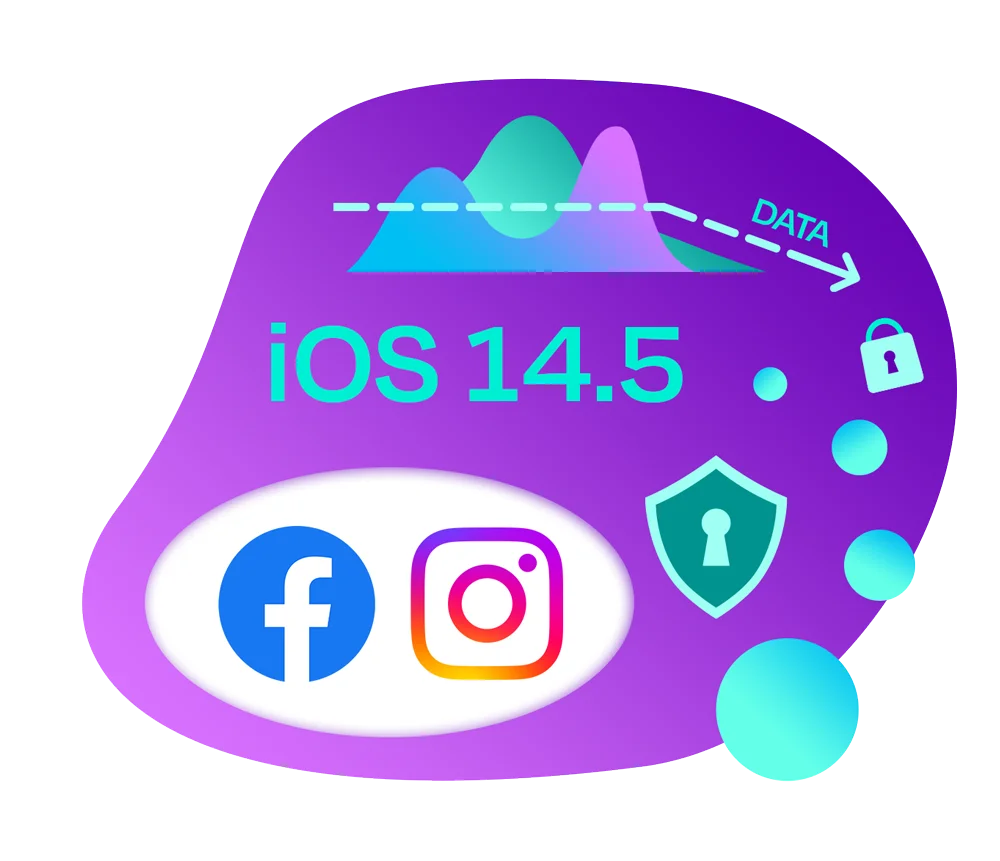
In the past year, advertisers have noticed an considerable decrease in their return on ad spend (ROAS). While ad prices have gone up and down, overall, CPMs and CPCs have remained fairly in line with 2019 levels.
That being said, because of the data loss there is less precision in targeting across many apps, but especially Facebook and Instagram. Even with CPCs remaining the same, the wider net being cast means many more irrelevant clicks on your ads.
In this guide, we’re going to explore some ways you can mitigate the effects of this data loss. While iOS 14.5 had a major impact on targeting, the growing internet privacy movement ensures it certainly won’t be the last. So, even if the majority of your audience isn’t iOS users, you’d be wise to prepare for the incoming data loss as Android, Chrome, and others reduce tracking capabilities.
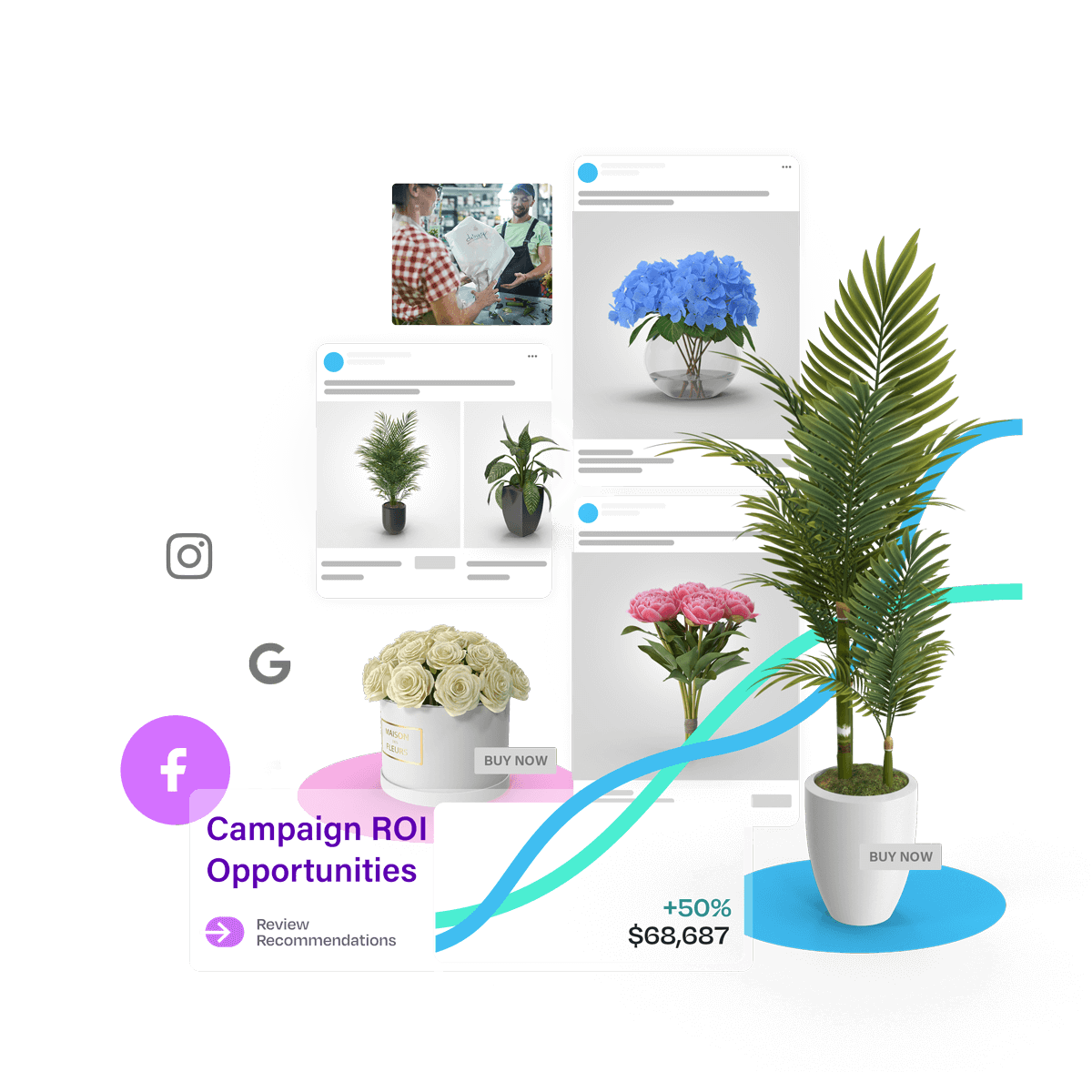
In Digital Marketing after iOS 14.5, you’ll find:
When we talk about iOS 14.5 we’re not talking about the whole update. The emoji updates, unlocking your phone while wearing a mask, and phoning emergency contacts with Siri are not particularly impactful on marketing. What did throw a wrench into the marketing data flow was the ATT (Ad Tracking Transparency) feature.
ATT was a pop-up that simply asked iPhone users if they’re ok with being tracked across apps. Unsurprisingly, most people said no. Rather than having tracking as the default and users manually going into their settings to turn it off, now apps had to have explicit consent to track.
As of Spring 2022, the opt-in rate stands at just 18% in the US. This means that apps, most notably Facebook, can’t track the habits of iPhone users as accurately. As advertising platforms have less information about their users, the targeting they can offer to advertisers becomes less precise.
Not only did the update make targeting harder, but it also made attribution even more difficult to pinpoint than before. Since there are fewer data about where traffic is coming from, it’s harder to match up conversions coming in through Facebook campaigns or from elsewhere.
Essentially, iOS 14.5 Created deliverability and an attribution problem.
Yes and no. It’s like that, but you’re not actually blindfolded. The data is there, it’s just not connected and accessible. So, you might as well be blindfolded.
Facebook (yeah, Meta, so Instagram too) was particularly hard hit because of the way that Facebook’s algorithm gathers data for targeting. Other big platforms don’t rely as much on tracking across third-party platforms.
For example, Google builds its profile on you based on the things you search for on the platform. If you’re looking up boots tonight, you can bet that you’ll see some footwear in your near future on YouTube or on display ads.
Facebook and Instagram, however, use the Facebook Pixel to track users across the web. Then, if you end up on Famous Footwear’s site tonight, Facebook will be able to serve up ads for boots tomorrow without you even interacting with the brand’s social media at all.
Of course, this is exactly what ATT was designed to prevent, or rather designed to make more transparent, as the name would imply. It’s ok to track people, but not secretly, so ask first. Asking first, unsurprisingly, means no in most cases.
Now Facebook is dealing with the aftermath of the data loss of a huge chunk of their mobile user base. While still retaining a lot of its first-party data, it is not as accurate as it was before.
For advertisers, this means that ads are showing to more irrelevant audiences, who are still clicking the links but aren’t converting. This increases the amount they’re spending on ads to get the same sales. Overall, ROAS is suffering.
First things first, let’s go over what Return on Ad Spend is and what it isn’t.
Facebook can only report what it knows. They’re not trying to trick you, they simply don’t have access to all the sales data, actual revenue, and input from other platforms. What Facebook tells you your ROAS is is only based on the reported revenue and not your actual revenue.
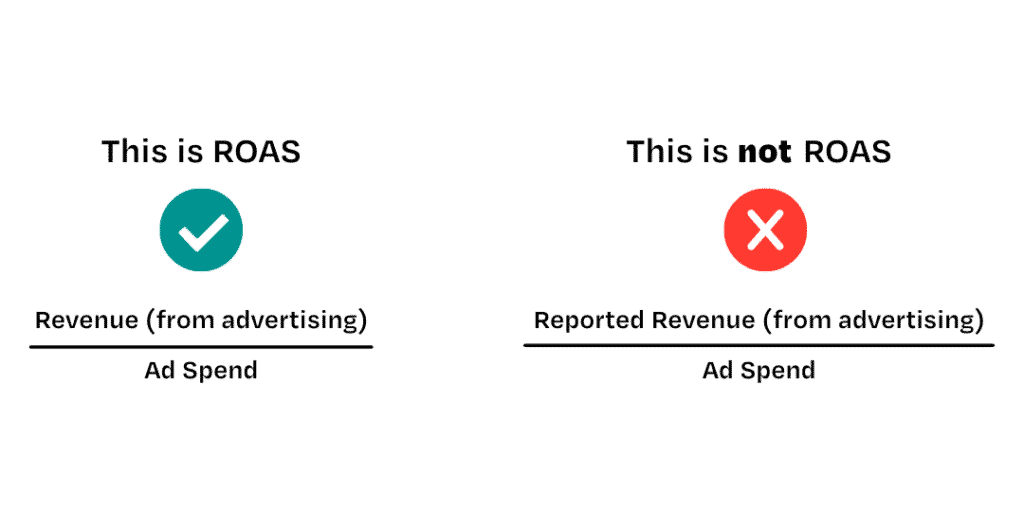
Because of iOS 14.5, Facebook can no longer accurately attribute and track, so it stopped being as accurate with its reporting.
So, if Facebook Ads are broken now, what can be done?
A very simple, tried and tested solution to knowing where traffic is coming from is to use UTM tags. If you’re not familiar with these at all, it’s definitely time to read up on what UTMs are and how they work.
By appending these tags to the end of your URLs, you can get granular information about the exact ads and placements people are clicking on. Everything from organic posts, links in email signatures, and, of course, paid ads should be tracked with UTMs.
The video below explains how to set up UTMs the Optily way to ensure each campaign is easily distinguishable from another.
Traditionally, the way Facebook gathers data about who is visiting your site and what they’re doing once they’re there (ie making a purchase) is with the Pixel. This is a small piece of code that you add to every page on your site and it pings back to Facebook about the activity happening there. iOS 14.5 and other changes across browsers that limit third-party cookies and tracking across the web limit the accuracy of the Pixel.
In order to fill in the blanks, not necessarily to replace the Pixel entirely, Facebook released the Conversion API (CAPI) for Shopify. As the diagram below shows, the CAPI is designed to bypass the browser entirely and send data straight from your server to Facebook.
This means that Facebook can have a clearer picture of the interactions a user has and be able to more accurately report on your ad campaigns. As cookies go away, internet privacy increases, and more users rely on AdBlockers, server-side solutions like CAPI will become more important.
We’re big fans of full-funnel strategies here at Optily and have been way before iOS 14.5. Now that this is making advertising harder and more expensive for small businesses, we’re pushing it more than ever!
This is a clip from our very first Optily Radio podcast episode where our CEO, Brendan Hughes, recounts a cautionary tale from a close friend who burned a lot of money by not implementing a proper funnel strategy:
We have a full in-depth guide on marketing funnel strategy, so you should definitely check that out, but we’ll summarize the basics for you here.
A marketing funnel consists of three stages:
The general idea is you start wide with a campaign and then remarket to people who show intent, like those who click on your ads, interact on your site, or engage with your social media.
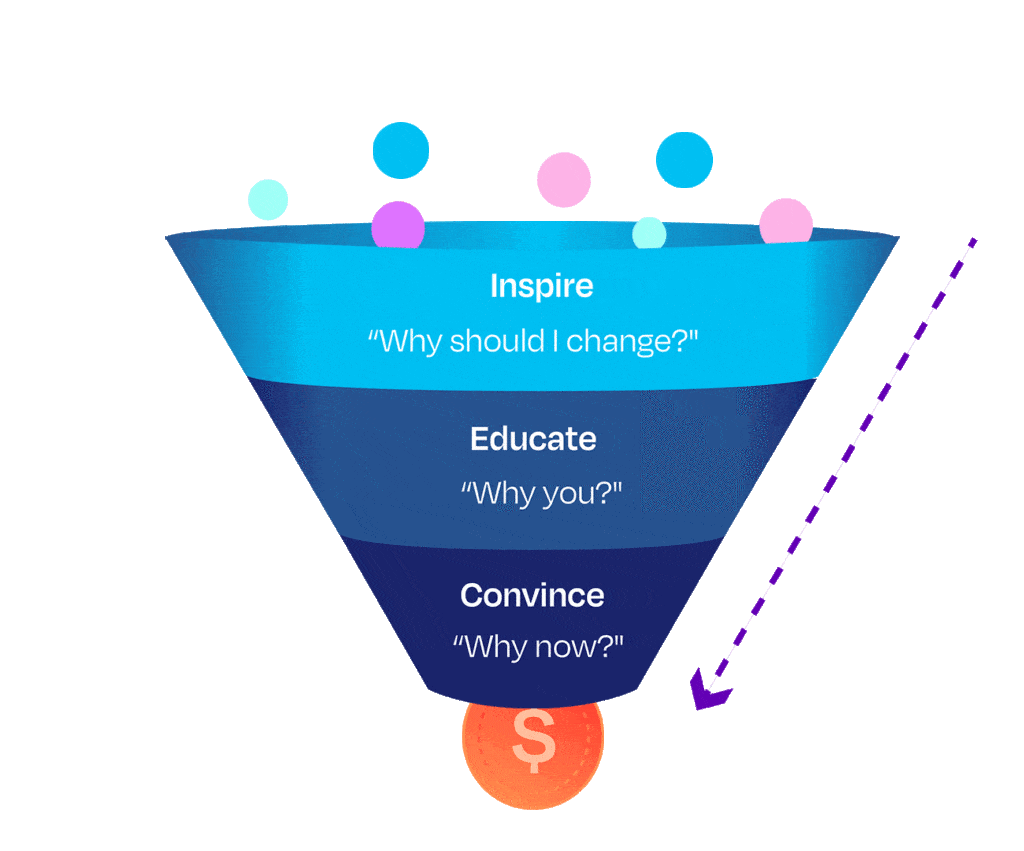
As people work their way through the funnel, they become warmer to your offering. Once they reach the end, they’ve likely interacted with your brand at several different times and are the most likely to make a purchase.
What this means is that you target this much smaller group of people with your conversion ads, which tend to be more expensive than brand awareness ones. By following these steps and whittling down your wide audience to those with purchase intent, you make the most of your ad dollars.
Digital problems require digital solutions. An ad spend automation technology, like Optily, can help you ensure that you’re always spending your budget where it makes the most impact. You can’t simply set up your full-funnel strategy, launch your campaigns with one audience, and leave them for months. Well, you can, but you’ll likely end up like Brendan’s friend in the video above.
The reality of digital marketing is that we constantly need to tweak and optimize based on the data the platforms feed back to us. Different creative formats, variations of copy and messaging, and different channels means our marketing managers are smothered with data on a daily basis.
It’s hard to deal with this much data if all you have to go off of is reporting within the platforms, Analytics that bridges the gap to a degree, and tons of exported spreadsheets.
Optily is able to connect your Facebook, Instagram, Google, and YouTube campaign metrics with your Shopify Analytics and store data. This bridges the gap between the various platforms and enables you to have clear insights into which campaigns are working at each stage of the funnel.
Optily’s smart recommendations then empower you to shuffle your existing budget around to the campaigns that are doing the best.
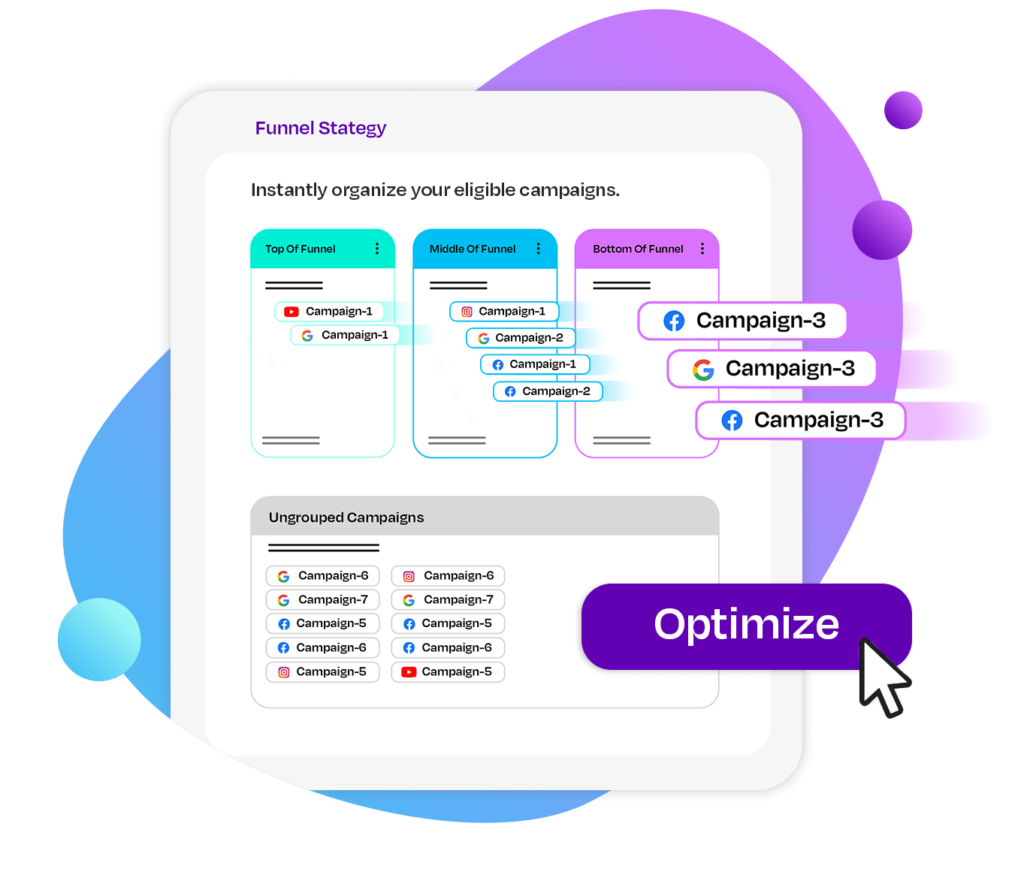
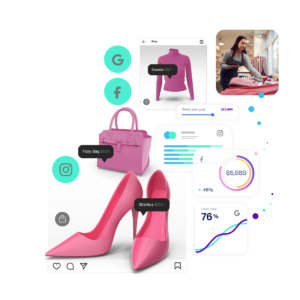
We’ve recently launched a free attribution report app available on the Shopify app store. This report provides you with a Source/Medium table, showing you where all your traffic is coming from.
With the free Shopify app, you get:
If you choose to upgrade from the free plan, you can try our Accelerate plan free for 14 days.
With the Accelerate, plan you get:
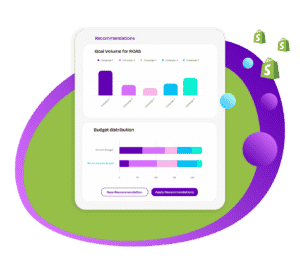
Curious to see it in action before you sign on? Our Support Squad would be happy to demo the product for you and answer any questions you may have.
Google and Facebook have been the longstanding kings of the digital advertising space. Given recent changes and fluctuations in price and other challenges for small advertisers, some small businesses are looking beyond these two channels.
While the potential reach across the Google and Meta properties is incredible, it’s wise to experiment beyond them if you’re able. TikTok, Quora, Pinterest, and Reddit are all sites that your audience likely visits in addition to the usual suspects, like YouTube and Instagram. It’s important to test and see what kind of reach, response, and ROAS you can achieve on these less competitive platforms.
Last year on Optily Radio, Joe Martinez made a great point about the value of trying out other channels to help grow your brand:
Quick, grab that crystal ball! 😂 All jokes aside, it is hard to know what exactly is around the corner in a digital space that’s constantly in flux. What we do know are the current trends we’re seeing that are likely going to continue:
More people are getting concerned about being tracked. People feel uneasy when they see ads that just seem to know a bit too much. Users are increasingly opting out of tracking, clearing their cookies, and using AdBlockers, while tech companies are responding to demand with privacy measures of their own.
iOS 14.5’s ATT is just the beginning of the end of hyper-personalized targeting through third-party data. How brands can prepare is by thinking more outside of the box and leveraging content, communities, and first-party data instead.
Your audience can self select their communities and who they follow online. As a brand, you can create your own content that people will seek out or create partnerships with influencers who already make the content and talk to your audience daily.
As we’ve already mentioned, it’s important to look beyond just Facebook and Google Ads and to approach marketing more holistically.
Rishabh Jain discussed this very idea on our podcast:
By partnering with influencers in your sphere and building these relationships, both creators and brands can benefit. The content creators get to engage with companies they really feel passionate about and brands gain a more authentic connection with these audiences.
Tailoring your marketing messaging and sales interactions based on who your customer is be the key to maximizing customer lifetime value. We chatted with Valentin Radu on our podcast who foresees customer segmentation and tailored messaging as a vital component of nurture campaigns.
By leveraging the data you have from your Shopify feed and additional technology, you can segment out your most profitable customers, enabling you to give them a more VIP treatment. But also, you can see which customers are slipping away and tailor specific outreach to them too.
Automation plays a key role in this future of hyper-personalization. While you will need a human touch to ensure key questions are addressed, Mia Bobak spoke to us on the show and highlighted the potential of your customer support to become a profit center.
By automating the more mundane and time-consuming aspects of customer service, like returns, you free up your agents to interact with your customers. Functions like live chat, social media, and even SMS are critically underused in eCommerce. Instant answers to shoppers’ questions mean they’re less likely to go elsewhere.
Stay up-to-date on platform changes, digital marketing tactics, and industry news. We promise we won’t spam!


Optily has partnered with Clearco to provide you with financial tools to grow your business.
Start your funding application below. Approval can take as little as 24 hours and every funded account receives 3 months of Optily software for FREE.
| Cookie | Duration | Description |
|---|---|---|
| cookielawinfo-checkbox-advertisement | 1 year | The cookie is set by GDPR cookie consent to record the user consent for the cookies in the category "Advertisement". |
| cookielawinfo-checkbox-analytics | 11 months | This cookie is set by GDPR Cookie Consent plugin. The cookie is used to store the user consent for the cookies in the category "Analytics". |
| cookielawinfo-checkbox-functional | 11 months | The cookie is set by GDPR cookie consent to record the user consent for the cookies in the category "Functional". |
| cookielawinfo-checkbox-necessary | 11 months | This cookie is set by GDPR Cookie Consent plugin. The cookies is used to store the user consent for the cookies in the category "Necessary". |
| cookielawinfo-checkbox-others | 11 months | This cookie is set by GDPR Cookie Consent plugin. The cookie is used to store the user consent for the cookies in the category "Other. |
| cookielawinfo-checkbox-performance | 11 months | This cookie is set by GDPR Cookie Consent plugin. The cookie is used to store the user consent for the cookies in the category "Performance". |
| elementor | never | This cookie is used by the website's WordPress theme. It allows the website owner to implement or change the website's content in real-time. |
| viewed_cookie_policy | 11 months | The cookie is set by the GDPR Cookie Consent plugin and is used to store whether or not user has consented to the use of cookies. It does not store any personal data. |
| Cookie | Duration | Description |
|---|---|---|
| bcookie | 2 years | This cookie is set by linkedIn. The purpose of the cookie is to enable LinkedIn functionalities on the page. |
| lang | session | This cookie is used to store the language preferences of a user to serve up content in that stored language the next time user visit the website. |
| lidc | 1 day | This cookie is set by LinkedIn and used for routing. |
| Cookie | Duration | Description |
|---|---|---|
| _ga | 2 years | This cookie is installed by Google Analytics. The cookie is used to calculate visitor, session, campaign data and keep track of site usage for the site's analytics report. The cookies store information anonymously and assign a randomly generated number to identify unique visitors. |
| _gat_gtag_UA_30310259_10 | 1 minute | This cookie is set by Google and is used to distinguish users. |
| _gid | 1 day | This cookie is installed by Google Analytics. The cookie is used to store information of how visitors use a website and helps in creating an analytics report of how the website is doing. The data collected including the number visitors, the source where they have come from, and the pages visted in an anonymous form. |
| ajs_anonymous_id | 1 year | This cookie is set by Segment.io to check the number of ew and returning visitors to the website. |
| ajs_user_id | never | The cookie is set by Segment.io and is used to analyze how you use the website |
| CONSENT | 16 years 4 months 4 days 13 hours | These cookies are set via embedded youtube-videos. They register anonymous statistical data on for example how many times the video is displayed and what settings are used for playback.No sensitive data is collected unless you log in to your google account, in that case your choices are linked with your account, for example if you click “like” on a video. |
| Cookie | Duration | Description |
|---|---|---|
| _fbp | 3 months | This cookie is set by Facebook to deliver advertisement when they are on Facebook or a digital platform powered by Facebook advertising after visiting this website. |
| bscookie | 2 years | This cookie is a browser ID cookie set by Linked share Buttons and ad tags. |
| fr | 3 months | The cookie is set by Facebook to show relevant advertisments to the users and measure and improve the advertisements. The cookie also tracks the behavior of the user across the web on sites that have Facebook pixel or Facebook social plugin. |
| IDE | 1 year 24 days | Used by Google DoubleClick and stores information about how the user uses the website and any other advertisement before visiting the website. This is used to present users with ads that are relevant to them according to the user profile. |
| NID | 6 months | This cookie is used to a profile based on user's interest and display personalized ads to the users. |
| test_cookie | 15 minutes | This cookie is set by doubleclick.net. The purpose of the cookie is to determine if the user's browser supports cookies. |
| VISITOR_INFO1_LIVE | 5 months 27 days | This cookie is set by Youtube. Used to track the information of the embedded YouTube videos on a website. |
| YSC | session | This cookies is set by Youtube and is used to track the views of embedded videos. |
| yt-remote-connected-devices | never | These cookies are set via embedded youtube-videos. |
| yt-remote-device-id | never | These cookies are set via embedded youtube-videos. |
| Cookie | Duration | Description |
|---|---|---|
| __tld__ | session | No description |
| _calendly_session | 21 days | No description available. |
| AnalyticsSyncHistory | 1 month | No description |
| li_gc | 2 years | No description |
| m | 2 years | No description available. |
| S | 1 hour | No description available. |
| UserMatchHistory | 1 month | Linkedin - Used to track visitors on multiple websites, in order to present relevant advertisement based on the visitor's preferences. |